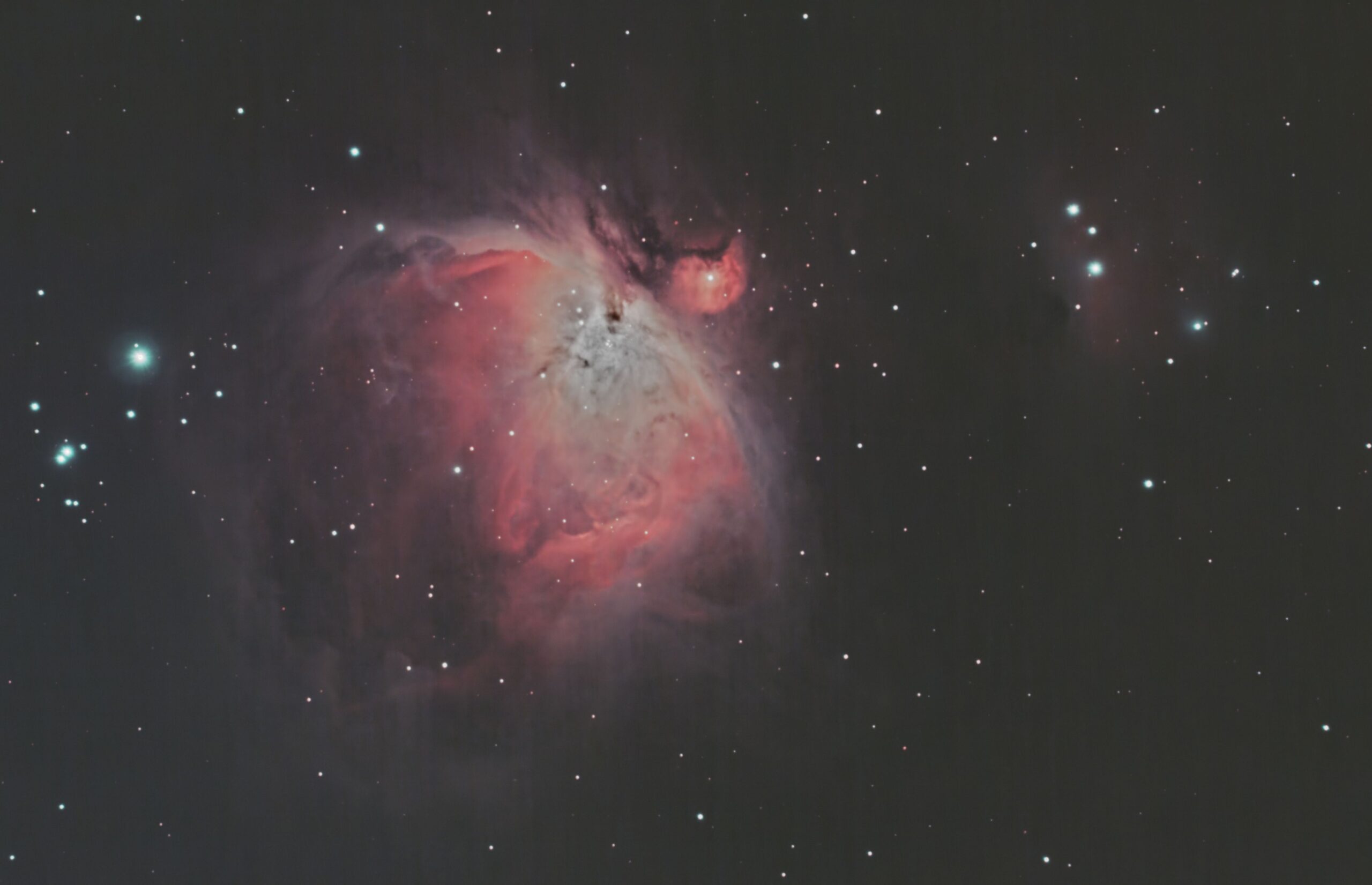M42 – Great Orion Nebula

This is one hard target to get a good photo of. It’s so bright it causes issues with the optics on my telescope even with narrowband filters. I have spent many hours trying to image this and have spent days processing it.
Information about the nebula.
The Great Orion Nebula, also known as M42 or NGC 1976, is one of the most stunning and easily recognizable deep-sky objects visible in the night sky. Located in the constellation of Orion, this nebula is a complex and dynamic region of gas and dust where new stars are born.
The Great Orion Nebula is visible to the naked eye from a dark location, and it is best observed with a telescope or binoculars. It is located about 1,344 light-years away from Earth and spans over 24 light-years in diameter. The nebula is part of a larger complex of interstellar gas and dust known as the Orion Molecular Cloud, which is one of the closest regions of ongoing star formation to our Solar System.
At the heart of the Great Orion Nebula is a cluster of young stars known as the Trapezium Cluster. These stars are responsible for the ionization of the surrounding gas, which gives the nebula its characteristic glow. The Trapezium Cluster contains several hot and luminous stars, including four main stars that form a trapezoidal shape.
The Great Orion Nebula is a region of intense star formation, where gravity causes dense pockets of gas and dust to collapse and form new stars. The nebula is illuminated by the intense ultraviolet radiation from these young stars, which ionizes the surrounding gas and causes it to emit light.
Observations of the Great Orion Nebula have revealed a wealth of information about the process of star formation. For example, the nebula contains numerous protostars, which are young stars that are still in the process of forming. These protostars are surrounded by disks of gas and dust, which are believed to be the precursors to planetary systems like our own.
The Great Orion Nebula is also home to a variety of interesting features, including dark lanes of dust that obscure parts of the nebula, and bright filaments of gas that trace out the complex magnetic field of the region. The nebula is also surrounded by a faint halo of gas, which extends several light-years beyond the visible boundaries of the nebula.
In addition to its scientific significance, the Great Orion Nebula is also a popular target for astrophotography. The nebula’s intricate structure and vibrant colors make it a favorite among amateur and professional astrophotographers alike. Capturing the intricate details of the nebula can be a challenging but rewarding experience for photographers, who often spend hours capturing and processing their images.
In conclusion, the Great Orion Nebula is a fascinating and beautiful object that has captured the imaginations of astronomers and stargazers for centuries. With its stunning structure and rich history, the nebula is sure to remain a favorite target for observation and exploration for years to come.
